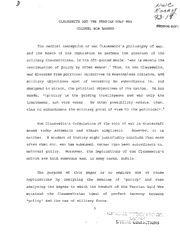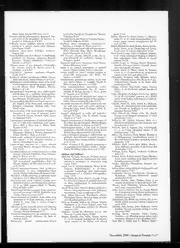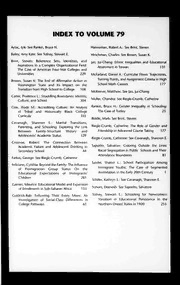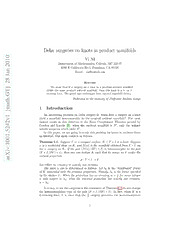
Preview Dehn surgeries on knots in product manifolds
Dehn surgeries on knots in product manifolds 0 Yi NI 1 0 Department of Mathematics, Caltech, MC 253-37 2 1200 E California Blvd, Pasadena, CA 91125 n a Email: yni@caltech.edu J 8 2 Abstract ] We show that if a surgery on a knot in a product sutured manifold T yields the same product sutured manifold, then this knot is a 0– or 1– G crossing knot. The proof uses techniquesfrom sutured manifold theory. . h Dedicated to the memory of Professor Andrew Lange t a m 1 Introduction [ 1 An interesting problem on Dehn surgery is: when does a surgery on a knot v yield a manifold homeomorphic to the original ambient manifold? The most 2 famous result in this direction is the Knot Complement Theorem proved by 4 Gordon and Luecke [8]: when the ambient manifold is S3, only the unknot 2 admits surgeries which yield S3. 5 . In this paper,we aregoingto study this problemfor knotsin surfacestimes 1 an interval. Our main result is as follows. 0 0 Theorem 1.1. Suppose F is a compact surface, K ⊂F ×I is a knot. Suppose 1 α is a nontrivial slope on K, and N(α) is the manifold obtained from F ×I via : v the α–surgery on K. If the pair (N(α),(∂F)×I) is homeomorphic to the pair i X (F ×I,(∂F)×I), then one can isotope K such that its image on F under the natural projection r a p: F ×I →F has either no crossing or exactly one crossing. The slope α can be determined as follows. Let λ be the “blackboard” frame b of K associated with the previous projection. Namely, λ is the frame specified b by the surface F. When the projection has no crossing, α= 1 for some integer n n with respect to λ ; when the minimal projection has exactly one crossing, b α=λ . b ItiseasytoseethesurgeriesinthestatementofTheorem1.1donotchange the homeomorphism type of the pair (F ×I,(∂F)×I). In fact, when K is a 0–crossing knot, it is clear that the 1–surgery preserves the homeomorphism n 1 F × 1 2 K K Figure 1: A local picture of the crossing type of the pair. When K is a 1–crossing knot, we can add a one-handle to F × 1 near the crossing to get a Heegaard surface F′ for F ×I. K can be 2 embedded into F′ as in Figure 1. F′ splits F ×I into two parts U0,U1, where U0 is F ×[0,21] with a one-handle added to F × 21, and U1 is F ×[12,1] with a one-handle added to −F × 1. The embedding of K can be chosen such that 2 K goes through each of the two one-handles exactly once. Now the blackboard frame λ is the frame specified by F′, and the λ –surgery on F′ cancels each b b one-handle with a two-handle. Hence the new pair is still homeomorphic to (F ×I,(∂F)×I). Definition 1.2. Notationsareasintheprevioustheorem. Fixaproductstruc- ture on (∂F)×I. Up to an isotopy relative to (∂F)×I, this product structure uniquelyextendstoaproductstructureP onF×I andaproductstructureP α on N(α). (This fact can be proved using Alexander’s trick.) Identify F with F ×1. Let i,i : F ×0 → F ×1 be the natural identity maps with respect to α P and P , respectively. We call α ϕ =i◦i−1: F →F α α the map induced by the α–surgery. This map ϕ fixes ∂F pointwise, and is α unique up to an isotopy relative to ∂F. Hence ϕ can be viewed as an element α in the mapping class group MCG(F,∂F). The definition of the map ϕ is justified by the following lemma. α Lemma 1.3. Let Y(α) be the manifold obtained from F ×S1 by α–surgery on K. Then Y(α) can be obtained from F ×I by identifying (x,0) with (ϕ (x),1) α for any x∈G. Proof. The manifold F ×S1 is obtained from F ×I by identifying y with i(y) for each y ∈F ×0. Let y =(x,0) with respect to the product structure P on α N(α), then i (y)=(x,1) with respect to P . We then have α α i(y)=ϕ (x,1)=(ϕ (x),1), α α since weidentify F with F×1in the abovedefinition. Hence (x,0) is identified with (ϕ (x),1) in Y(α) for each x∈F. α 2 a b K c Figure 2: A 1–crossing knot Proposition 1.4. Notations are as in Theorem 1.1. When the projection of K has no crossing and α= 1, n ϕ =τn, α whereτ is therighthand Dehn twistalongK ⊂F. When theminimal projection of K has exactly one crossing, let a,b,c be the simple closed curves obtained by resolving the crossing in two different ways as in Figure 2 and let τ ,τ ,τ be a b c the righthand Dehn twists along a,b,c. Then ϕ =τ2τ2τ−1 α a b c when the crossing is positive, and ϕ =τ−2τ−2τ α a b c when the crossing is negative. This paper can be compared with Ni [9]. In fact, Theorem 1.4 in [9] can be restated in a form similar to Theorem 1.1. Theorem 1.5. Suppose F is a compact surface, K ⊂ F ×I is a knot and α is a slope on K. Let N(α) be the manifold obtained by the α–surgery on K. If F×{0} is not Thurston norm minimizing in H2(N(α),(∂F)×I), then there is an ambient isotopy of F ×I which takes K to a curve in F ×{1}. Moreover, 2 α is the frame on K specified by F ×{1}. 2 The proofofTheorem1.5usesGabai’ssuturedmanifoldtheory[2,3,4]and an argument due to Ghiggini [7]. Using a different method, Scharlemann and Thompson [12] get the same conclusion of Theorem 1.5 under the assumption that F ×{0} is compressible in N(α). This paper is organized as follows. In Section 2, we give some preliminaries on sutured manifold theory and foliations, as well as a characterization of one- crossing knot projections. In Section 3, we study some warm-up cases. In Section 4, we use the argument in the proof of Theorem 1.5 to reduce our 3 problemto the case where F is a pairof pants. InSection 5,we study this case by analyzing the map induced by surgery and using a variant of the argument in Ni [9]. Acknowledgements. We are grateful to Danny Calegari for helpful discus- sions on mapping class groups. The author was partially supported by an AIM Five-Year Fellowship and NSF grant number DMS-0805807. 2 Preliminaries Inthissection,wearegoingtoreviewthesuturedmanifoldtheoryintroduced by Gabai in [2]. We also state a uniqueness result for the Euler classes of taut foliations of fibred manifolds. In addition, we define “double primitive” knots in F ×I and show that they are exactly the knots with a projection consisting of only one crossing. 2.1 Sutured manifold decompositions Definition 2.1. A sutured manifold (M,γ) is a compact oriented 3–manifold M together with a set γ ⊂ ∂M of pairwise disjoint annuli A(γ) and tori T(γ). ThecoreofeachcomponentofA(γ)isasuture,andthesetofsuturesisdenoted by s(γ). Every component of R(γ) = ∂M − int(γ) is oriented. Define R+(γ) (or R−(γ)) to be the union of those components of R(γ) whose normal vectors point out of (or into) M. The orientations on R(γ) must be coherent with respect to s(γ), hence every component of A(γ) lies between a component of R+(γ) and a component of R−(γ). Definition 2.2. Let S be a compact oriented surface with connected compo- nents S1,...,Sn. We define x(S)= max{0,−χ(S )}. i Xi Let M be a compact oriented 3–manifold, A be a compact codimension–0 sub- manifold of ∂M. Let h ∈ H2(M,A). The Thurston norm x(h) of h is defined to be the minimal value of x(S), where S runs over all the properly embedded surfaces in M with ∂S ⊂A and [S]=h. Definition 2.3. Let(M,γ)beasuturedmanifold,andS aproperlyembedded surfaceinM,suchthatnocomponentof∂S boundsadiskinR(γ)andnocom- ponentofS isadiskwithboundaryinR(γ). Supposethatforeverycomponent λ of S∩γ, one of 1)–3) holds: 1) λ is a properly embedded non-separating arc in γ. 2) λ is a simple closed curve in an annular component A of γ in the same homology class as A∩s(γ). 4 3) λ is a homotopically nontrivial curve in a toral component T of γ, and if δ is another component of T ∩S, then λ and δ represent the same homology class in H1(T). Then S is called a decomposing surface, and S defines a sutured manifold decomposition (M,γ) S (M′,γ′), where M′ =M −int(Nd(S)) and ′ ′ ′ ′ γ = (γ∩M )∪Nd(S+∩R−(γ))∪Nd(S−∩R+(γ)), ′ ′ ′ ′ R+(γ ) = ((R+(γ)∩M )∪S+)−int(γ ), ′ ′ ′ ′ R−(γ ) = ((R−(γ)∩M )∪S−)−int(γ ), where S′ (S′ ) is that component of ∂Nd(S)∩M′ whose normal vector points + − out of (into) M′. Definition2.4. Asuturedmanifold(M,γ)istaut,ifM isirreducibleandR(γ) is Thurston norm minimizing in H2(M,γ). Suppose S is a decomposing surface in (M,γ), S decomposes (M,γ) to (M′,γ′). S is taut if (M′,γ′) is taut. Definition 2.5. Suppose (M,γ) S (M′,γ′) is a taut decomposition, by [2] we can extend this decomposition to a sutured manifoldhierarchyof(M,γ),fromwhichwecanconstructatautfoliationF of M, suchthat R(γ)consists of compactleavesof F. We then call F a foliation induced by S. Moreover, when R+(γ) is homeomorphic to R−(γ), from M we can obtain a manifold Y with boundary consisting of tori by gluing R+(γ) to R−(γ) via a homeomorphism. F then becomes a taut foliation F1 of Y. We also say that F1 is a foliation induced by S. Definition 2.6. A decomposing surface is called a product disk, if it is a disk which intersects s(γ) in exactly two points. A decomposing surface is called a product annulus, if it is an annulus with one boundary component in R+(γ), and the other boundary component in R−(γ). We recall the main result in Gabai [3], which has been intensively used in Ni [9]. Note that the resultis notstated in its originalform, but it is contained in the argument in [3]. See also [9, Theorem 2.8] for a sketch of the proof. Definition 2.7. An I-cobordism between closed connected surfaces T0 and T1 is a compact 3–manifoldV such that ∂V =T0∪T1 and for i=0,1 the induced maps ji: H1(Ti)→H1(V) are injective. Definition 2.8. Suppose M is a 3-manifold, T is a toralcomponent of ∂M. If all tori in M which are I-cobordant to T in M must be parallel to T, then we say M is T–atoroidal. 5 Theorem 2.9 (Gabai). Let (M,γ) be a taut sutured 3–manifold. T is a toral component of γ, S is a decomposing surface such that S ∩ T = ∅, and the decomposition (M,γ) S (M1,γ1) is taut. Suppose M is T–atoroidal, then for any slope α on T except at most one slope, the decomposition after Dehn filling (M(α),γ\T) S (M1(α),γ1\T) is taut. Aspecialcaseoftheabovetheoremisthecaseγ =∂M,whichistheoriginal form in [3]. 2.2 Euler classes of foliations We will need the Euler classes of foliations. Definition 2.10. Suppose Y is a compact 3–manifold with ∂Y consisting of tori. P is an oriented plane field transverse to ∂Y. Let T(∂Y) be the tangent plane field of ∂Y. The line field P ∩T(∂Y) has a natural orientation induced by the orientations of P and T(∂Y), thus it has a nowhere vanishing section v ⊂P| . Then one can define the relative Euler class ∂Y e(P)∈H2(Y,∂Y) ofP tobe the obstructionto extendingv toanowherevanishingsectionofP. When F is a foliation of Y that is transverse to ∂Y, let TF be the tangent plane field of F and let e(F)=e(TF). Definition2.11. SupposeC isaproperlyembeddedcurveinacompactsurface F. We say C is efficient in F if |C∩δ|=|[C]·[δ]|, for each boundary component δ of F. Suppose S is a properly embedding surface in compact 3–manifold Y with boundary consisting of tori. We say S is efficient in Y if S ∩ T consists of coherently oriented parallel essential curves for each boundary component T of Y. Proposition 2.12. Suppose Y is a compact 3–manifold that fibres over S1. Let G be a fibre of the fibration E. Suppose F is a taut foliation of Y which is transverse to ∂Y such that G is a leaf of F. Then e(F)=e(E)∈H2(Y,∂Y)/Tors. 6 Proof. This result follows easily from the fact that the Floer homology of a fibred manifold is “monic”. Using this approach, one can even prove that the twoEulerclassesareequalinH2(Y,∂Y). Herewewillpresentamoregeometric proof. In order to prove the desired result, we only need to show that he(F),hi=he(E),hi (1) for any h∈H2(Y,∂Y). When h=[G], we have he(F),[G]i=he(E),[G]i=χ(G). (2) In general, suppose U ⊂ Y is a proper surface representing h such that U ⋔G. We can choosethe representativeU suchthat U is efficient in Y. Then U∩GcanalsobemadeefficientinG. CuttingY openalongG,wegetG×I. Let U ⊂G×I be the proper surface obtained by cutting U open alongC =U∩G. Let C0,C1 ⊂G be proper oriented curves such that −C0×0=(∂U)∩(G×0), C1×1=(∂U)∩(G×1). Since C0 and C1 are homologous efficient curves in G relative to ∂G, as in theproofof[3,Lemma0.6],wecanfindcompactsubsurfacesV1,V2,...,Vn and efficient curves C0 =γ0,γ1,...,γn−1,γn =C1 in G, such that ∂Vi\(∂G)=γi∪(−γi−1). Let W =G\V . Perturbing the surface i i n i−1 i i (−γi−1×[ , ])∪(Vi× ) (3) (cid:18) n n n (cid:19) i[=1 slightly, we get a proper surface V ⊂G×I, such that (∂V)∩(G×0)=−C0×0, (∂V)∩(G×1)=C1×1. Similarly, perturbing the surface n i−1 i i (γi−1×[ , ])∪(Wi× ) (4) (cid:18) n n n (cid:19) i[=1 slightly, we have a proper surface W ⊂G×I, such that (∂W)∩(G×0)=C0×0, (∂W)∩(G×1)=−C1×1. LetV ⊂Y be the propersurfaceobtainedfromV by identifying C0×0and C1×1 with C ⊂G⊂Y. Similarly, define W ⊂Y. Note that [V]−[U]=[V ∪(−U)]∈H2(Y,∂Y). 7 Perturbing V ∪(−U) slightly, we get a properly immersed surface in Y which is disjoint from the fibre G. So [V ∪(−U)] = m[G] for some integer m. Using (2), in order to check (1) for h=[U], we only need to check it for h=[V]. Since F is taut, by Thurston [13, Corollary 1] we have χ(V) ≤ he(F),[V]i, χ(W) ≤ he(F),[W]i. Adding the two inequalities together, we get χ(V)+χ(W)≤he(F),[V]+[W]i. (5) By the constructions (3), (4), the result of doing oriented cut-and-pastes to V and W is n copies of G. So the left hand side of (5) is nχ(G), while the right hand side is he(F),n[G]i = nχ(G). So the equality holds. In particular, we should have χ(V)=he(F),[V]i. The same argument shows that χ(V)=he(E),[V]i, so (1) holds for h = [V]. Since we have checked (1) for all elements h ∈ H2(Y,∂Y), e(F) is equal to e(E) up to a torsion element in H2(Y,∂Y). 2.3 A characterization of one-crossing knot projections In this subsection, we will give a characterization of one-crossing knot pro- jections in terms of double primitive knots. This fact is not used in the current paper, but it is useful to bare it in mind. Definition 2.13. LetF′ ⊂F×I beaconnectedsurfaceofgenusg(F)+1,and ∂F′ = (∂F)× 1. Suppose F′ is a Heegaard surface. Namely, F′ splits F ×I 2 into two parts U0 and U1, such that U0 is homeomorphic to (F ×[0,12])∪H1, and U2 is homeomorphic to (F ×[12,1])∪H2, where H1 is a one-handle with feet on F × 21 and H2 is a one-handle with feet on −F × 21. A knot K ⊂F ×I is a double primitive knot if it is isotopic to a curve on F′ which goes through each of H1,H2 exactly once. Lemma 2.14. A knot K ⊂ F ×I is double primitive if and only if it has a projection which has only one crossing. Proof. If a knot has a one-crossing projection, then it is double primitive as shown in the introduction. Now assume K is double primitive, then K is em- bedded into a Heegaardsurface F′ as in the above definition. WeclaimthatF′ isstabilized. Namely,thereisacompressingdiskD0 ⊂U0 and a compressing disk D1 ⊂ U1 such that |(∂D0)∩(∂D1)| = 1. When F is closed, this follows from the theorem of Scharlemann and Thompson [11] that the Heegaard splittings of F ×I are standard. When F is not closed, let R be 8 thetoruswithonehole,wecanglueacopyofRtoeachcomponentof∂F,then F becomes a closed surface G and F′ becomes a Heegaardsurface G′ in G×I. Using Scharlemann and Thompson’s theorem, G′ is stabilized, hence there are compressing disks D0 and D1 in the two compression bodies separated by G′, such that |(∂D0)∩(∂D1)| = 1. Using standard arguments we can isotope D0 and D1 to be disjoint from the copies of R×I, so D0 ⊂U0, D1 ⊂U1, thus our conclusion follows. Since g(F′) = g(F)+1, after compressing F′ along D0 we get a surface homeomorphic to F (and hence parallel to F ×0 in F ×I). So F′ is obtained from F × 12 by adding a one-handle, and D1 is a disk whose boundary goes through the one-handle exactly once. Now the local picture of F′ looks exactly like in Figure 1. The knot K goes through the one-handle once and intersects ∂D1 once, so there is a crossing near D1 and no crossing elsewhere. 3 Warm-up cases In this section, we are going to prove some easy cases of our main theorem. When F is a disk or sphere, our result follows from Gordon and Luecke’s Knot ComplementTheorem[8]. WhenF isanannulus,wehavethefollowinglemma. Lemma 3.1. Theorem 1.1 is true when F is an annulus. Proof. Let M be the meridian of the solid torus V = F ×I, and let L be the frame of V specified by ∂F. By Gabai [5], if K is nontrivial, then K is a 0– or 1–bridge braid in F ×I. CappingoffoneboundarycomponentofF withadisk,wegetadiskD. Let λ be the Seifert frame of K in D×I and let µ be the meridian of K. If K is the core of V, then the surgery preserves the homeomorphism type of (F ×I,(∂F)×I) if and only if the slope is µ+nλ for some integer n. From now on we assume the braid index of K is greater than 1. If K is a 0–bridge braid, then K is isotopic to pL+qM on ∂V for some p,q ∈Z. LetΛbetheframeonK specifiedby∂V,thenΛ=pqµ+λ. Asurgery on K yields a solid torus if and only if the slope α of the surgery satisfies that ∆(α,Λ) = 1, namely, when the slope α is µ +nΛ for some integer n. Now pα = pµ+pnΛ is homologous to M+pn(pL+qM) in V\K, so the meridian of the new ambient solid torus after surgery is (1+pqn)M+p2nL. Since the surgery preserves the homeomorphism type of the pair (F ×I,(∂F)×I), we musthave∆((1+pqn)M+p2nL,L)=1,thus1+pqn=±1. Sincep>1,n6=0, we have (p,q,n) = (2,1,−1) or (2,−1,1). When (p,q) = (2,1), the slope α on K is µ+n(pqµ+λ)=(1+pqn)µ+nλ, which is 1 with respect to the frame λ, and the meridian of the new ambient solid torus is M+4L; when (p,q) = (2,−1), the slope α on K is −1, and the meridian of the new ambient solid torus is M−4L. We can check α is the blackboard frame. 9 If K is a 1–bridge braid, then K is determined by 3 parameters ω,b,t by Gabai [6]. Here ω > 0 is the braid index, 1 ≤ b ≤ ω −2, t ≡ r (mod ω) for some integer r with 1≤r ≤ω−2. Since the α–surgery yields a solid torus, by [6, Lemma 3.2] the slope of the surgery is λ−(tω+d)µ, where d ∈ {b,b+1}. So tω + d = ±1, which is impossible for any ω,b,t satisfying the previous restrictions. Lemma 3.2. In the above lemma, let ϕ ∈ MCG(F,∂F) be the map induced α by the α–surgery. If K is the core of F ×I and α = 1, then ϕ = τn, where n α τ is the right hand Dehn twist in F; if K is the (2,±1)–cable in F ×I, then ϕ =τ±4. α Proof. When K is the core of F ×I, the conclusion is well-known. When K is the (2,±1)–cable, then from the proof of the previous lemma we know that the meridian of the new ambient solid torus is M±4L, hence the conclusion follows from the first case. The following lemma is obvious. Lemma 3.3. Suppose (C×I)⊂(F ×I) is a product disk or product annulus, (C ×I)∩K = ∅. Let F1 be the surface obtained from F by cutting F open along C, let N1 be the manifold obtained from N = (F × I)\int(Nd(K)) by cutting N open along C×I. Then the pair (N(α),(∂F)×I) is homeomorphic to (F ×I,(∂F)×I) if and only if the pair (N1(α),(∂F1)×I) is homeomorphic to (F1×I,(∂F1)×I). Lemma 3.4. Theorem 1.1 is true when F is a torus. Proof. Let C ⊂ F be a simple closed curve such that K is homologous to a multiple of C. Consider the homology class [C ×I] ∈ H2(F ×I,∂(F ×I)), then [C × I] · [K] = 0. It follows that [C × I] is also a homology class in H2((F ×I)\K,∂(F ×I)). Let (S,∂S)⊂((F ×I)\K,∂(F ×I)) be a taut surface representing [C×I]. By Theorem 2.9, S remains taut in at least one of the original F × I and N(α)∼=F ×I. Hence S must be a product annulus. Cutting F ×I open along S, K becomes a knot in (annulus ×I). Now we can apply Lemma 3.1 and Lemma 3.3 to get our conclusion. Lemma3.5. IftheconclusionofTheorem 1.1holds for allknotswhoseexterior are ∂(Nd(K))–atoroidal, then the conclusion holds for all knots in F ×I. Proof. By the assumption, we only need to consider the case where there is a torusinN =F×I\int(Nd(K))whichisI-cobordantbutnotparallelto∂Nd(K). Let R be an “innermost” such torus. By [9, Lemma 3.1], R bounds a solid torus U in F ×I, such that K ⊂ U. SinceRisinnermostinN,ifatorusin(F×I)\int(U)isI-cobordantto∂U =R, then this torus is parallel to R. Let V be the manifold obtained from U by α– surgery on K. By Gabai [5], one of the following cases holds. 10
The list of books you might like

Haunting Adeline

Credence

The Sweetest Oblivion (Made Book 1)

The 5 Second Rule: Transform your Life, Work, and Confidence with Everyday Courage
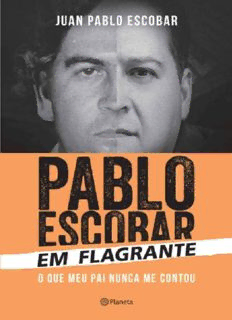
Pablo Escobar em flagrante
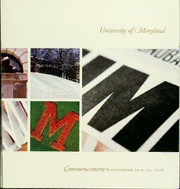
Commencement
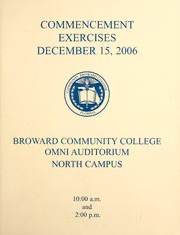
Commencement Exercises December 2006
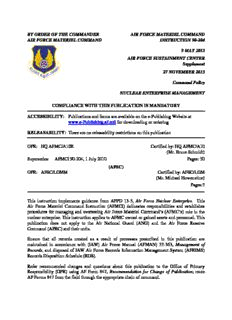
by order of the commander air force materiel command air force
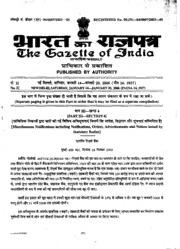
Gazette of India, 2006, No. 42

Receiving Love: Transform Your Relationship by Letting Yourself Be Loved

DTIC ADA454497: Out of Bounds. Transnational Sanctuary in Irregular Warfare

Dispuesta a todo
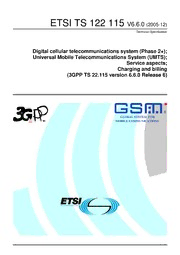
TS 122 115 - V6.6.0 - Digital cellular telecommunications system (Phase 2+); Universal Mobile Telecommunications System (UMTS); Service aspects; Charging and billing (3GPP TS 22.115 version 6.6.0 Release 6)
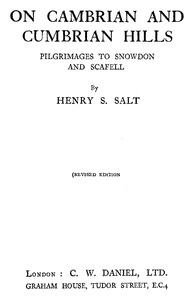
On Cambrian and Cumbrian Hills: Pilgrimages to Snowdon and Scafell by Henry S. Salt

c 2009 by Kyoungsoo Park

C. S. Friedman - This Alien Shore
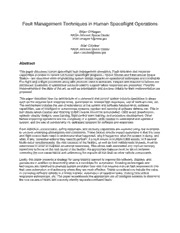
NASA Technical Reports Server (NTRS) 20080026132: Fault Management Techniques in Human Spaceflight Operations
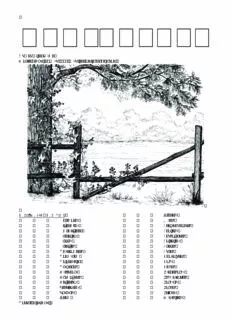
C11 byanyothername
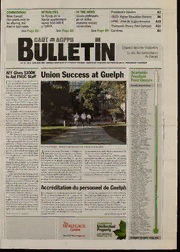
CAUT Bulletin June 2006 (Volume 53, Number 6)
